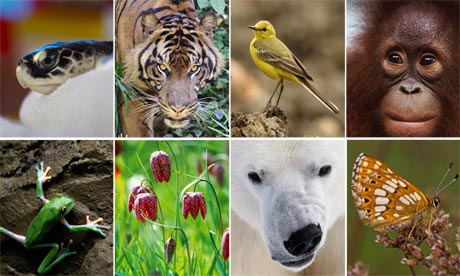 Bedeckt
Bedeckt 2°C, 91% Humidität
3.6 m/s Windgeschwindigkeit
 Mäßig bewölkt
Mäßig bewölkt 4°C
Nacht: 1°C
 Mäßig bewölkt
Mäßig bewölkt 4°C
Nacht: 3°C


Why is it so important to protect life?
written by Clemens
|
Plants and animals hold medicinal, agricultural, ecological and commercial value. Endangered species must be protected and saved so that future generations can experience their presence and value. |
Erste Rubrik
Endangered Animals |
||
Online-ZeitungErste Ausgabe |
written by Ann-Sophie, Clemens, Max und Niklas |
17.03.2013 |
Causes of Endangerment
written by Clemens
When discussing the causes of endangerment, it is important to understand that individual species are not the only factors involved in this dilemma. Endangerment is a broad issue, one that involves the habitats and environments where species live and interact with one another. Although some measures are being taken to help specific cases of endangerment, the universal problem cannot be solved until humans protect the natural environments where endangered species dwell. There are many reasons why a particular species may become endangered. Although these factors can be analyzed and grouped, there are many causes that appear repeatedly. Below are several factors leading to endangerment: Our planet is continually changing, causing habitats to be altered and modified. Natural changes tend to occur at a gradual pace, usually causing only a slight impact on individual species. However, when changes occur at a fast pace, there is little or no time for individual species to react and adjust to new circumstances. |
This can create disastrous results, and for this reason, rapid habitat loss is the primary cause of species endangerment. The strongest forces in rapid habitat loss are human beings. Nearly every region of the earth has been affected by human activity, particularly during this past century. The loss of microbes in soils that formerly supported tropical forests, the extinction of fish and various aquatic species in polluted habitats, and changes in global climate brought about by the release of greenhouse gases are all results of human activity.
|
It can be difficult for an individual to recognize the effects that humans have had on specific species. It is hard to identify or predict human effects on individual species and habitats, especially during a human lifetime. But it is quite apparent that human activity has greatly contributed to species endangerment. For example, although tropical forests may look as though they are lush, they are actually highly susceptible to destructionThis is because the soils in which they grow are lacking in nutrients. It may take Centuries to re-grow a forest that was cut down by humans or destroyed by fire, and many of the world's severely threatened animals and plants live in these forests. If the current rate of forest loss continues, huge quantities of plant and animal species will disappear. |
 Lade Seiteninhalt...
Lade Seiteninhalt...

